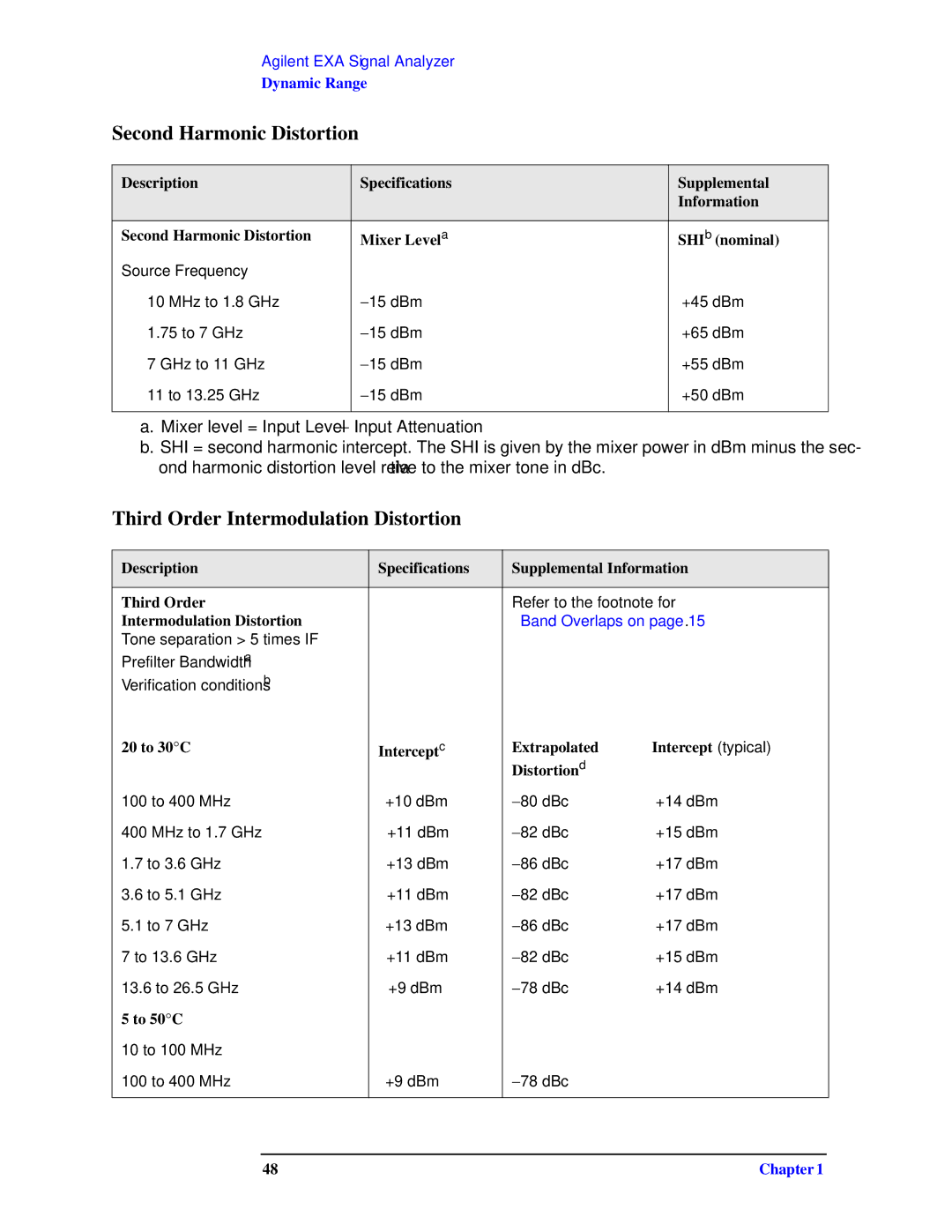N9010A specifications
Agilent Technologies, now known as Keysight Technologies, offers a wide range of sophisticated measurement instruments, one of which is the N9010A, a high-performance signal analyzer. The N9010A is a versatile tool designed to meet the needs of engineers and researchers dealing with complex signal generation and analysis.The N9010A signal analyzer is built on the X-Series signal analysis platform, making it an outstanding choice for various applications, including wireless communication, radar, and electronic warfare. Its main features include an extensive frequency range from 9 kHz to 6 GHz, which provides users with the capability to analyze a diverse array of signals.
One of the defining characteristics of the N9010A is its high dynamic range and sensitivity. The instrument has been engineered to ensure that weak signals can be accurately detected in the presence of strong interfering signals. This quality is crucial for applications such as spectrum monitoring and interference analysis.
Equipped with advanced digital signal processing techniques, the N9010A allows for real-time analysis of complex signals. The analyzer supports various modulation techniques and can perform measurements on frequency, time, and phase to provide a comprehensive view of signal performance. Users can leverage its abilities to analyze a wide range of formats including LTE, Wi-Fi, and many others.
Another significant feature of the N9010A is its flexibility. The instrument includes various software options and measurement applications that can be configured to meet specific testing requirements. This adaptability is essential for engineers who need to stay current with industry developments and evolving technologies.
User-friendliness is also a hallmark of the N9010A. The device features an intuitive interface that simplifies the navigation process, making it easier for users to set up tests and perform analyses with reduced training time.
Additionally, the N9010A can be integrated into a broader test environment, allowing for seamless operation within automated measurement systems. This capability enhances productivity and efficiency in design validation and compliance testing.
In summary, the Agilent Technologies N9010A signal analyzer combines advanced technology, high performance, and user-friendly features. Its ability to handle a wide range of applications makes it an essential tool in the toolbox of modern engineers and researchers working in signal analysis, making it a valuable investment in the pursuit of technological advancements.
